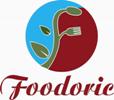 |
Foodoric and associated companies are chemicals manufacturing companies operated in India USA UAE Europe Asia and other countries around the world. The associates have one or more of certifications like ISO-9001, ISO-14001, ISO-22000:2005, FSSC 22000; OHSAS 18001; Kosher and Halal Certified; HACCP, FSSAI and FDA - GMP approval. Buyers are assured of good quality and CIF wholesale and retail price for supplies of our Mono and Diglycerides. |
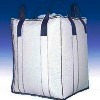
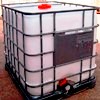
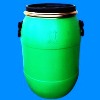
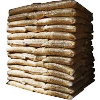
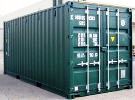
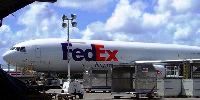
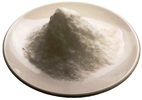
Mono and Diglycerides USP NF and FCC Food Grade Manufacturers Suppliers
Mono and Diglycerides
USP NF and FCC Food Grade

Mono and Diglycerides CAS Number: 67701-32-0, Molecular Formula: yy, Molecular Weight: yy
Mono and Diglycerides FCC Food Grade Specifications
DESCRIPTION
Mono- and Diglycerides occur as a substance that varies in consistency from yellow liquids through white- to pale yellow colored plastics to hard, ivory-colored solids. They consist of mixtures of glycerol mono- and diesters, with minor amounts of triesters, and of edible fats or oils or edible fat-forming fatty acids. They are insoluble in water, but are soluble in alcohol, in ethyl acetate, and in chloroform and other chlorinated hydrocarbons.
REQUIREMENTS
Acid Value: Not more than 6.
Arsenic: Not more than 3 mg/kg.
Free Glycerin: Not more than 7.0%.
Lead: Not more than 2 mg/kg.
Residue on Ignition: Not more than 0.5%.
The following specifications should conform to the representations of the vendor: Hydroxyl Value, Iodine Value, 1-Monoglyceride Content, Saponification Value, and Total Monoglycerides.
Mono- and Di-glycerides USP NF Grade
Mono- and Di-glycerides is a mixture of glycerol mono- and di-esters, with minor amounts of tri-esters, of fatty acids from edible oils. It contains not less than 40.0 percent of monoglycerides. The monoglyceride content is not less than 90.0 percent and not more than 110.0 percent of the value indicated in the labeling. It may contain suitable stabilizers.
Acid value: not more than 4.
Hydroxyl value: not less than 90.0% and not more than 110.0% of the value indicated in the labeling.
Iodine value: not less than 90.0% and not more than 110.0% of the value indicated in the labeling. If the value stated in the labeling is less than 10, the Iodine value is not more than 10.
Saponification value: not less than 90.0% and not more than 110.0% of the value indicated in the labeling.
Residue on ignition: not more than 0.1%.
Arsenic: 3 ppm.
Heavy metals: 0.001%.
Limit of free glycerin: —
Mobile phase and Chromatographic system: Proceed as described in the Assay for monoglycerides.
Standard solutions: Dissolve an accurately weighed quantity of USP Glycerin in tetrahydrofuran, and dilute with tetrahydrofuran, as necessary, to obtain solutions having known concentrations of about 0.5 mg per mL, 1.0 mg per mL 2.0 mg per mL, and 4.0 mg per mL.
Test solution: Use the Assay preparation.
Procedure: Separately inject equal volumes (about 40 8L) of each of the Standard solutions and the Test solution into the chromatograph, record the chromatograms, and measure the responses for the glycerin peaks. Plot the concentration, in mg per mL, of USP Glycerin in the Standard solutions versus the glycerin peak responses obtained. From the standard curve so obtained, determine the glycerin concentration, C, in mg per mL, in the Test solution. Calculate the percentage of glycerin in the portion of Mono- and Di-glycerides taken by the formula:
500(C/W)
in which C is as obtained above; and W is the amount, in mg, of Mono- and Di-glycerides taken to prepare the Test solution: not more than 7.0% of free glycerin is found.
Assay for monoglycerides: —
Mobile phase: Use filtered and degassed tetrahydrofuran. Make adjustments if necessary (see System Suitability under Chromatography).
Assay preparation: Transfer about 200 mg of Mono- and Di-glycerides, accurately weighed, to a 5-mL volumetric flask, dissolve in and dilute with tetrahydrofuran to volume, and mix.
Chromatographic system (see Chromatography)— The liquid chromatograph is equipped with a refractive index detector and a 7-mm × 60-cm column that contains 5-8m packing L21 (100Å). The flow rate is about 1 mL per minute. The column and detector temperatures are maintained at 40 .
[NOTE—Two or three 7.5-mm × 30-cm L21 columns may be used in place of one 60-cm column provided that system suitability requirements are met.] Chromatograph the Assay preparation, and record the peak responses as directed for Procedure. The order of elution is triglycerides, diglycerides, monoglycerides, and glycerin. The relative standard deviation for replicate injections determined from the monoglycerides peak is not more than 1.0%.
Procedure: Inject a volume (about 40 8L) of the Assay preparation into the chromatograph, record the chromatogram, and measure the responses for the major peaks. Calculate the percentage of monoglycerides in the portion of Mono- and Di-glycerides taken by the formula:
100(rU / rS)
in which rU is the peak response for monoglycerides; and rS is the sum of the responses of all the peaks, except the solvent peak.

Mono and Diglycerides Manufacturers Suppliers:
Foodoric Group of Cos
India, USA, UAE, Europe
e-mail: info@foodoric.com

Copyright
Last
14 March, 2022
Mono and Diglycerides Suppliers, Exporters, Importers, Manufacturers offering good CIF wholesale and retail prices, quality and online information.
A jackal woke up early in the morning and went in to the plains. He looked at his long shadow in the rising morning sun and said to himself, "I must have a camel for my meal today".
He kept moving around till noon and it was getting hot and the jackal was tired. He was also hungry and thirsty. He looked at his small shadow in the mid-day sun. He murmered, "I was only joking about the camel, a mouse will do".